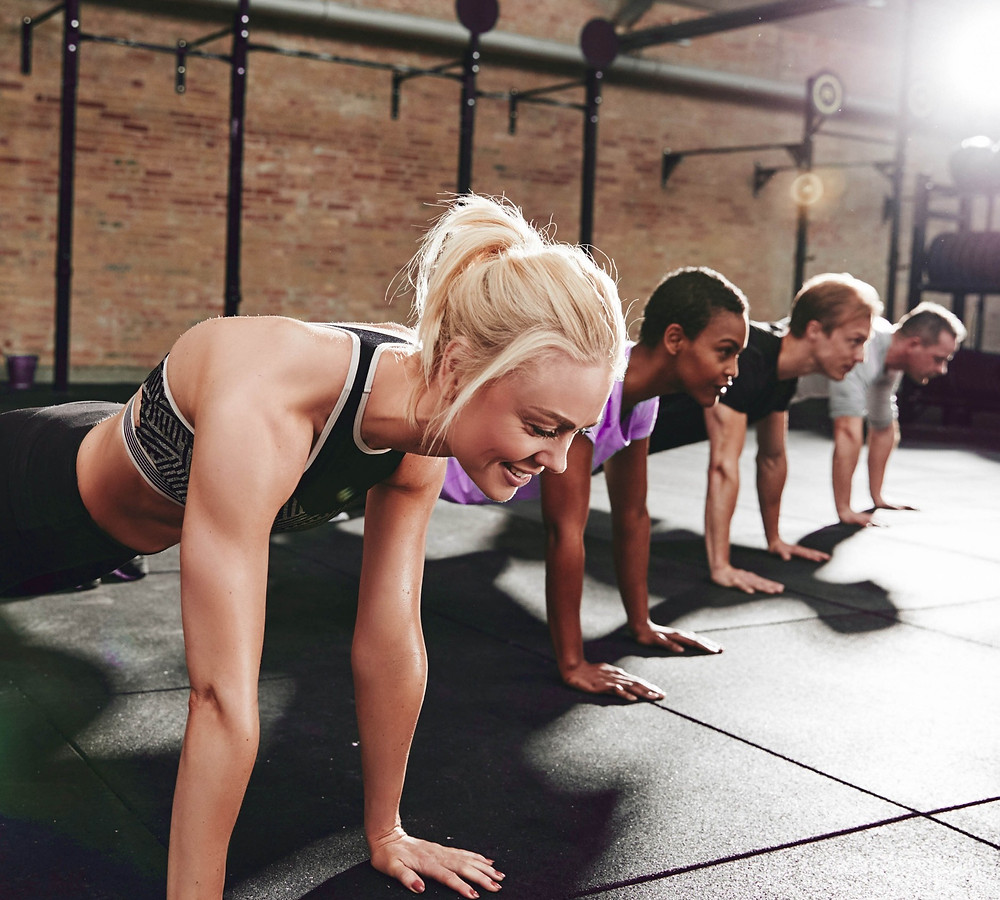Total body workouts built around HIIT, which includes both cardio and resistance, are highly effective for improving your cardiovascular endurance, burning fat, and building muscle. HIIT training has been backed by extensive psychological research; still, people don’t do it. This is because high-intensity interval training is really demanding. You will perform exhausting, all-out physical effort for a short time, followed by an active, short recovery period. As a beginner, your routine will probably involve 60 seconds hard workout followed by 1-2 minutes of break, depending upon the exercise involved. The goal of HIIT training is to get your heart pumped at 85% of its maximum rate.
There are several benefits to doing HIIT. If you think it is not for you, these ten reasons may help you change your mind.
#1 Most efficient forms of exercise
High-intensity interval training is the most efficient form of exercise that can do wonders for you in less amount of time. HIIT training is mostly preferred by those who want to get in shape without spending hours doing it. In most cases, it is perfect for efficiency aficionados, lazy people, and busy people. In fact, according to research, you can make more progress in just 15 minutes of high-intensity interval training than you can by running for an entire hour.
HIIT will improve your maximum oxygen uptake, also known as VO2 max, which is the measurement of the maximum amount of oxygen an individual can utilise during intense training. During a 2011 study at the American College of Sports Medicine Annual Meeting, it was found that just two weeks of HIIT training expands your aerobic capacity as much as 6-8 weeks of endurance training.
#2 Burn more calories
HIIT training keeps burning calories even after you stop working out! Just 10 minutes of intense training can burn more calories than 30 minutes on the treadmill. HIIT makes you use more oxygen to the point that it becomes difficult to breathe. As your body is using more oxygen, the absorption process starts working at a higher level. Hence, your body continues to burn fat for 24-48 hours after the training. According to a study published in Sport Medicine Open journal, it was stated that HIIT training actually increases your metabolism post-training even more than resistance workouts and jogging. Once your training is done and when you are trying to get back to a normal resting state, your body will take different efforts to bring your systems and functions back to homeostasis.
#3 Burn more fat
In addition to burning more calories in less time, HIIT training helps you burn more fat than endurance exercises. This is because the intensity workouts cause your body to burn fat for energy instead of carbohydrates. A study published in the Journal of Obesity states that a three-week HIIT training for 20 minutes helped participants lose around 2 kilograms of body fat in 12 weeks. Similar to burning calories, your body continues to burn fat even after 24 hours of HIIT.
#4 Improve your cardiovascular health
If you are really engaging in HIIT training, you will feel like your heart is trying to jump out of your chest. The basic principle of HIIT training is to get your heart pumped at 85% of its maximum rate. When your heart starts beating faster, it goes into the anaerobic zone, which means “in the absence of oxygen.” One study conducted in 2006 revealed that after 8 weeks of HIIT training, the participants could cycle two times as long as they could before the experiment while maintaining the same velocity. This suggests that your heart will continue to run smoothly even after you attain old age.
#5 HIIT keeps your blood sugar levels in check
It is a known fact that consuming healthy foods helps in maintaining your blood sugar levels. However, with HIIT training, you can ensure that your blood sugar levels never escalate nor plummet. A review of more than 50 studies revealed that high-intensity interval training improves insulin resistance more than your regular steady-state exercise. When your blood sugar levels are low, you are likely to get hungry and angry while experiencing mood swings. When your blood sugar levels are higher, your pancreas produces insulin at high levels. HIIT helps in keeping your blood sugar levels balanced.
#6 Enhance your metabolism
HIIT training further contributes to boosting your metabolism. Some studies suggest that high-intensity workouts enhance resting energy consumption. In simple terms, HIIT workouts intensify your basic metabolic rate, which is the rate of energy outflow by your body. This leads to a faster metabolism.
#7 Loose fat and gain muscle mass
HIIT training helps you lose fat but gain lean muscle mass, giving you a toned body. Most people refrain from HIIT training due to the misconception that it leads to losing muscle mass as well. Studies show that HIIT training preserves muscle mass while getting rid of excess body fat.
#8 No equipment or going to the gym is not necessary
The best part about HIIT training is that it doesn’t require equipment or any gym membership. Workouts like air squats, high knees, burpees, and sprints followed by push-ups, pull-ups, and many other bodyweight exercises are enough for a kick-ass workout even if you have no access to any gym equipment.
#9 Can be done in groups
Another advantage of HIIT training is that you don’t have to bear all the stress alone. You can invite your friends for a round of HIIT training. You can challenge each other in performing the workouts. There is no better way to get fit than group workouts.
#10 You can personalise your training depending on your fitness level
There is no need of performing high intervals of 30 seconds on 10 seconds off (30-second workout and 10-second rest). You can tailor your workouts that suit your fitness level. You can take more extended rest periods and short work intervals in the beginning and slowly work your way up.
Final Words
We don’t think that you need more reasons to start HIIT training. However, we do recommend that you should consult with your GP or trainer before starting high-intensity training as certain people with health issues are



